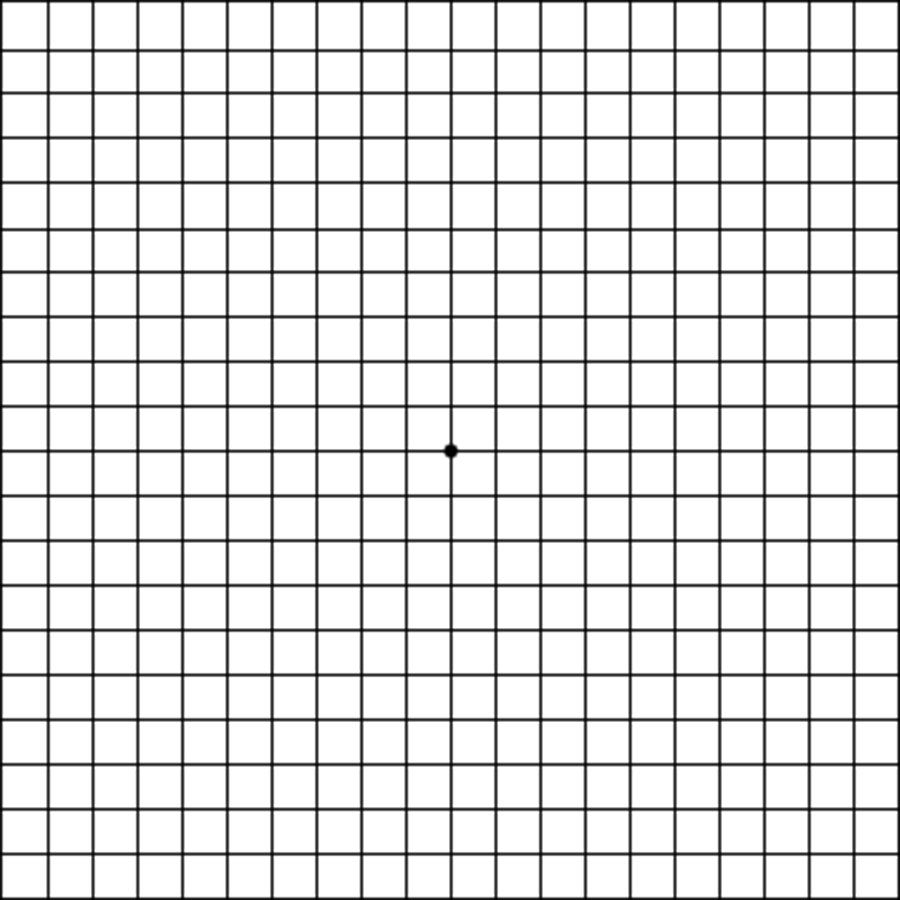Test yourself for age-related macular degeneration
- Overview
Over 600,000 people live with age-related macular degeneration (AMD) in the UK, and most of them are over 65. The eye, like other parts of the body, begins to suffer wear and tear in our later years. Advanced AMD generally leads to a blind spot in central vision, but it’s not a hopeless situation. Catching it early can help to slow its progression and you can lower your risk of developing severe AMD through simply making a few lifestyle changes and precautions right now.
The Amsler Grid: testing yourself for the early signs
Ophthalmologists often use the Amsler Grid to test for the early signs of AMD. You can also use the grid provided below or apply the same idea while you complete crossword puzzles in a newspaper. Here’s how to do it:


- If you wear reading glasses, put them on and position your face at a normal reading distance from the screen
- Cover one eye and focus on the dot at the centre
- Do any of the lines look wavy, blurred or distorted?
- Can you see all corners and sides of the grid?
- Are there any missing or dark areas?
- Repeat with your other eye
All the lines should look straight and the boxes should appear to be the same size and each intersection should form a 90 degree angle. If this is not what you see and you have answered yes to any of the above questions - have a professional eye examination done as soon as possible.
The two types of age-related macular degeneration
AMD disrupts your central vision, blurring out whatever you are trying to look at. While it’s very debilitating, it doesn’t affect peripheral vision so most people with advanced AMD will retain some level of sight. If you catch the condition early, severe visual impairment is rare.
‘Dry’ AMD
Most cases of AMD are what we call the dry form of the condition. It occurs when the ageing macular cells become damaged by drusden deposits, a build up of lipids (fatty protein) on the retina and pigment disturbance. There are few early symptoms so it is important to have your eyes tested regularly. There is nothing that can be done to arrest dry AMD but fortunately it progresses very slowly, so the best advice is to avoid things that may speed up the progression of the disease and to take appropriate steps such as:
- Not smoking
- Eating a balanced diet
- Maintaining a healthy weight and an active lifestyle
- Protecting your eyes from the sun
- Getting other eye conditions treated
- Regular eye tests
‘Wet’ AMD
Wet AMD is less common but more severe. It occurs when blood vessels grow into the retina, leaking fluid and causing distortion. With Wet AMD, your vision can deteriorate rapidly but it can be treated by injecting drugs into the eye every 4 – 6 weeks. It will not cure the condition, but it may preserve your eyesight enough so you can continue doing the things you enjoy including driving if treated early.
Testing for AMD is non-invasive and can be done using a retinal angiogram and a 3D scan. These will help determine the type and stage of the condition so that the best course of action can be determined. There is no cure for AMD but it’s important to remember that you can reduce your risk and retain an acceptable level of vision if you act early.
Last updated Thursday 19 November 2020
First published on Tuesday 10 May 2016


